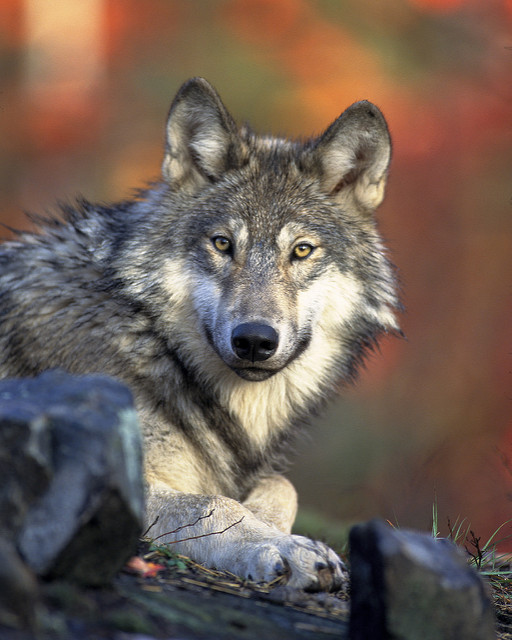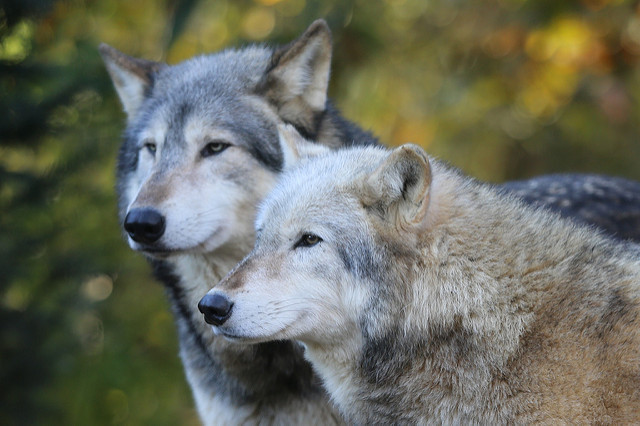
A pack of wolves in Washington State are set to be killed by the Washington Department of Fish and Wildlife following a number of attacks on rancher’s cattle since mid-July.
According to reports, six of the eleven members – six adults and five pups – of the Profanity Peak wolf pack have already been shot dead. The decision to exterminate that pack was made after a dozen cattle were killed or injured in the pack territory.
On Aug. 3, the Washington Department of Fish and Wildlife a partial removal of the pack after 5 cows were found injured or dead following a wolf attack. Two female wolves were shot and killed just two days later. The attacks on the cattle stopped temporarily, prompting the WDFW to postpone the operation.
On August 19, more cows were found injured and dead. In response, the WDFW authorized the slaughter of the entire pack. This is not the first time the Washington Department of Fish and Wildlife (WDFW) have targeted grey wolves. In the last 4-years, the WDFW have targeted grey wolves three times in total.

“We said we would restart this operation if there was another wolf attack, and now we have three,” Donny Martorello, WDFW wolf policy lead, said in the statement. “The department is committed to wolf recovery, but we also have a shared responsibility to protect livestock from repeated depredation by wolves.”
“We are kindly asking for a little space and understanding so we can maintain the highest level of safety for the public, the staff and our producers,” Martorello added to KREM.
Since the operation’s announcement, the WDFW has faced criticism from animal advocate groups and local residence. On September 1, dozens of people gathered outside the Washington Department of Fish and Wildlife to protest against the agency’s decision. In fact, people are so outraged and disgusted by the decision that they are now sending WDFD officials and cattle producers death threats.
“My friends in WDFW have received death threats … It’s gone tooooo far,” Rob Wielgus, associate professor and director of the Large Carnivore Conservation Lab at School of the Environment at Washington State University, said in an email to The Seattle Times.
Grey wolf populations were prevalent across North America throughout the 19th and 20th Century. However, in the 1800s and early 1900s, populations plummeted due to habitat loss, decreased availability of prey and increased extermination effort to protect livestock. In 1974, the grey wolf was listed as endangered by the Endangered Species Act (ESA). Since then, populations have become slightly more stable, bringing their conservation status to ‘least concern’.
Unfortunately, as demonstrated by this recent decision, it appears the fight between wolf and cattle producers has been reignited over recent years. Despite our increased knowledge of the species and its natural environment, our first call of defense has not changed in over two-hundred years – shoot to kill.

However, according to Robert Wielgus, director of the Large Carnivore Conservation Lab at Washington State University, conflict between man and wolf is predictable and avoidable. Wielgus is currently studying conflicts between wolves and livestock in Washington. As part of his study, Wielgus has radio-collared 700 cattle and dozens of wolves, including animals in the Profanity Peak pack.
According to Wielgus, his camera-monitors the Profanity Peak pack’s den show that McIrvin, of the Diamond M Ranch, had taken his cattle to graze at the wolf den site, which is also said to be public land in the Colville National Forest. “This livestock operator elected to put his livestock directly on top of their den site; we have pictures of cows swamping it, I just want people to know,” Wielgus said in an interview.
Wielgus then goes on to explain that the conflict is both predictable and avoidable, using his research to reaffirm his statement. According to his findings, there have been no cattle kills among producers who are participating in his study. McIrvin had refused to participate in Wielgus’ research, and has not placed radio-collars on his cattle in an effort to avoid interaction with radio-collared wolves.
“If this were on private land, it’s turn the page, ho-hum,” said Carter Niemeyer, a wolf expert who led the effort to reintroduce them into Idaho for the U.S. Fish & Wildlife Service. “But public lands have to be managed differently. Those lands belong to all of us, and so do the native wildlife.”
You want to support Anonymous Independent & Investigative News? Please, follow us on Twitter: Follow @AnonymousNewsHQ
This Article (Washington State To Kill Entire Pack Of Wolves Following Easily Avoidable Cattle Attacks ) is free and open source. You have permission to republish this article under a Creative Commons license with attribution to the author and AnonHQ.com.




